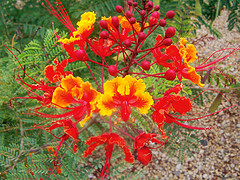There seems to have been a breakthrough – procedurally at any rate – at the WIPO discussions in Geneva on protecting traditional knowledge, folklore and expressions of culture (genetic resources are also on the table). Meanwhile, in Abuja, the Nigerian president Olusegun Obasanjo has launched a committee to boost research on traditional medicine.
Salute!
A study just published in Nature and reported in The Times here identified the particular class of the polyphenols found in red wine which confers the greatest health advantage, by suppressing production of a protein which narrows blood vessels. There’s been lots recently in the press about the supposed health benefits of moderate consumption of wine, in particular red wine, as part of the “Mediterranean diet.” Known as polymeric procyanidins, these polyphenols turn out to be present in particularly high concentrations in some wines from Sardinia and the Pyrenees. This is due to both the wine-making technique (the compounds are released from the seeds after a long period of fermentation) and variety (the Tannat grape from SW France is rich in these chemicals). The Cannonau wine from Nuoro (Sardinia) and the Madiran from Gers (France) have the highest levels of procyanidins, and it turns out that people from those areas are also of above-average longevity, especially the men.
Gorilla medicine?
Coincidentally, here’s a very detailed article which perhaps sheds some light on how some medicinal plants may come to be used by people. Aframomum melegueta is a herb in the ginger family which grows along the coast of West Africa. The seeds are sometimes called “Grains of Paradise,” and were traded as a spice in the 15th century, giving its area of origin the name of Grain Coast. The plant is used in traditional medicine, and biochemists at Rutger’s Biotechnology Centre have now isolated a powerful anti-inflammatory from the grains. But here’s the fun part: apparently, Western lowland gorillas really like Aframomum. Did local people learn to use the plant by watching the gorillas?
New medicinal plants
Speaking of medicinal plants, a remarkable study in Peru traces the traditional use of plants for all kinds of curative purposes from colonial times to the present. There’s an article on the work on SciDev.Net here but it is in Spanish. Although many plants used in colonial times have disappeared from the area of the study, traditional healers have replaced them with other species and have thus maintained their pharmacopeia. This is very much a living, evolving tradition.
Mysteries of medicinal plants remain
 A fascinating reflection by Dr S. Allen Coulter, professor of neurology and neurophysiology at Harvard Medical School and Massachusetts General Hospital, asks a question that perplexes many people: how did people acquire their detailed knowledge of the effects of plants on the body? Coulter’s musings are prompted by “scientific” studies on Caesalpinia pulcherrima, which reveal active ingredients that match the effects he was told by a wise person some years ago. I feel the same way about complicated food processing methods; how on earth did people learn how to render toxic and inedible things safe and delicious? Like Coulter, I fear we will never really know.
A fascinating reflection by Dr S. Allen Coulter, professor of neurology and neurophysiology at Harvard Medical School and Massachusetts General Hospital, asks a question that perplexes many people: how did people acquire their detailed knowledge of the effects of plants on the body? Coulter’s musings are prompted by “scientific” studies on Caesalpinia pulcherrima, which reveal active ingredients that match the effects he was told by a wise person some years ago. I feel the same way about complicated food processing methods; how on earth did people learn how to render toxic and inedible things safe and delicious? Like Coulter, I fear we will never really know.
Flickr photograph by Esther17 used under a Creative Commons License.